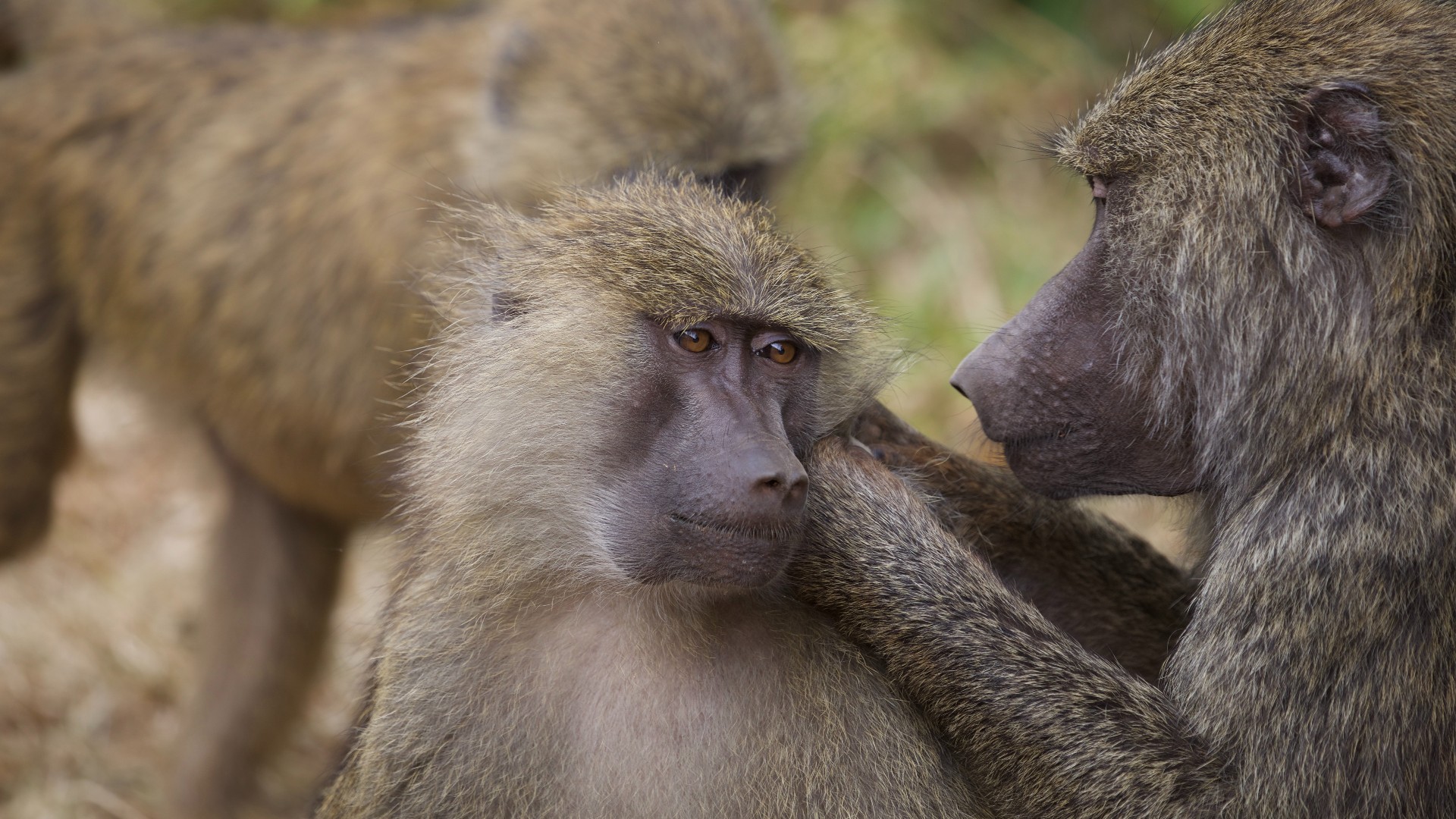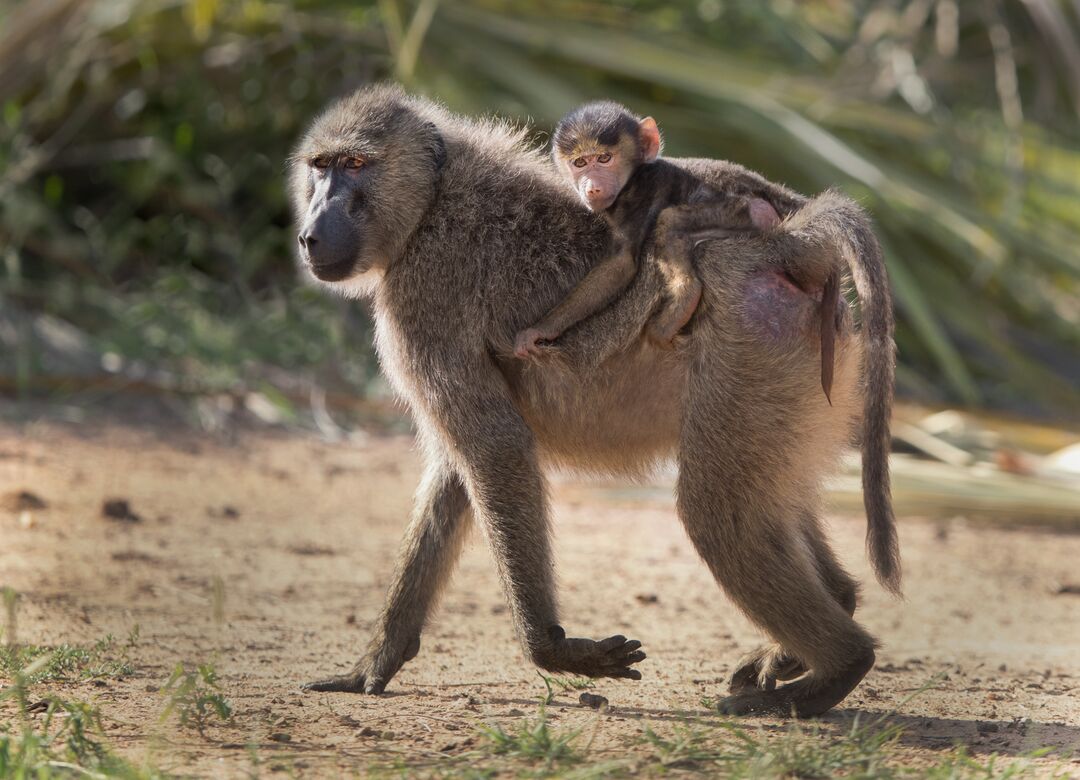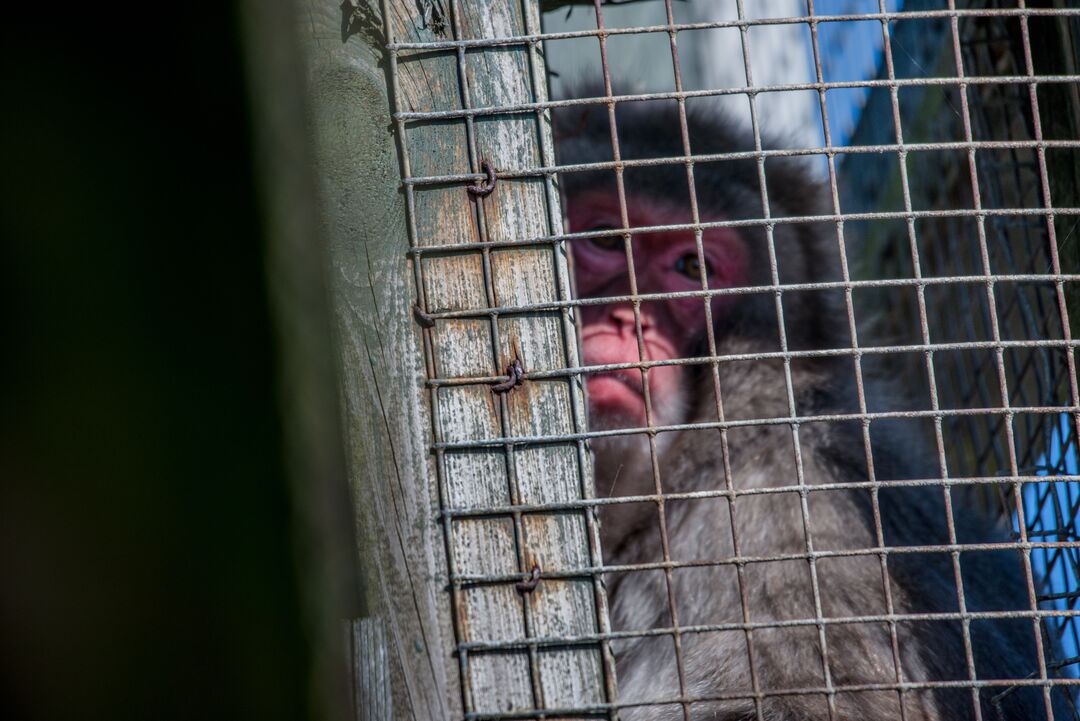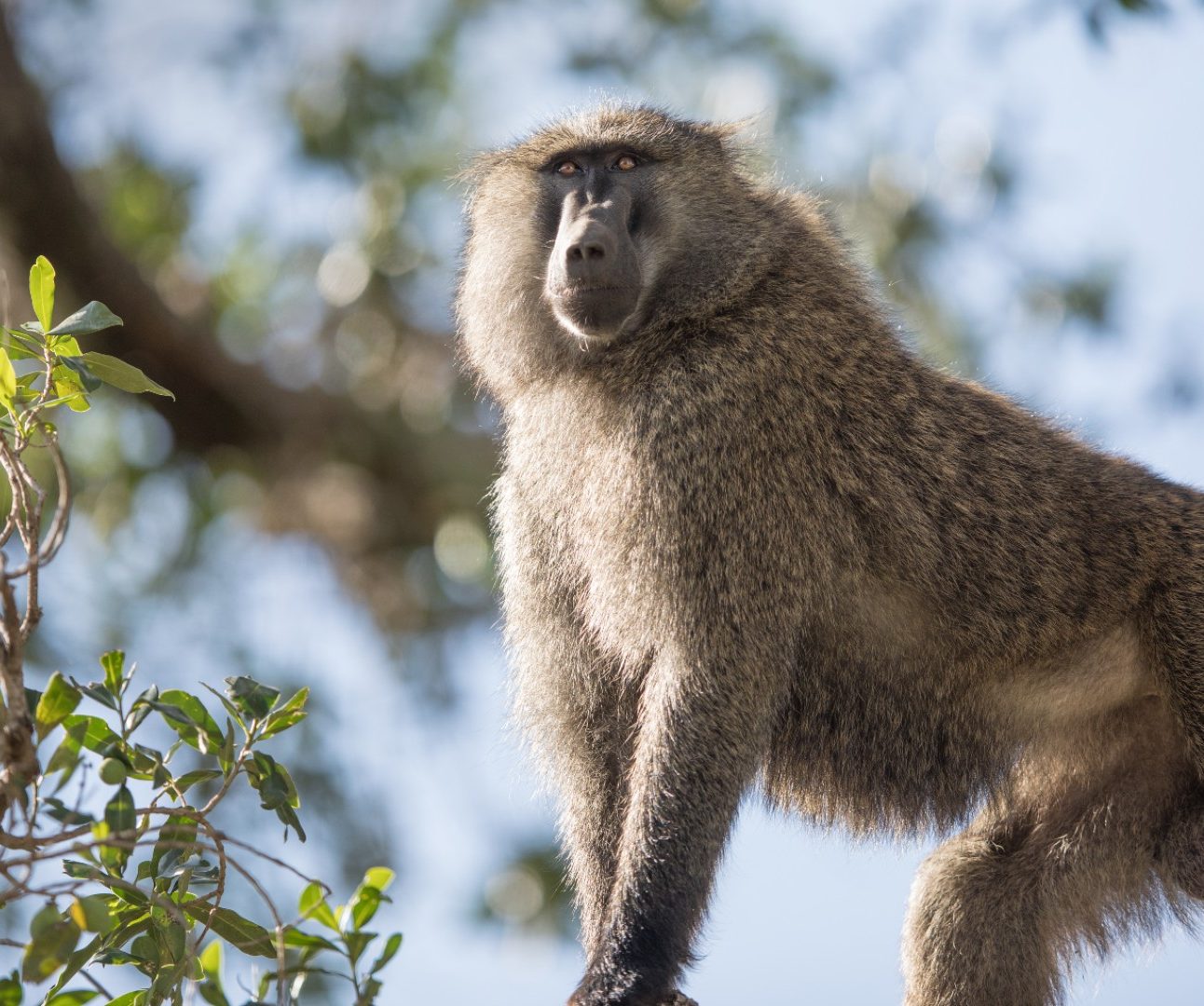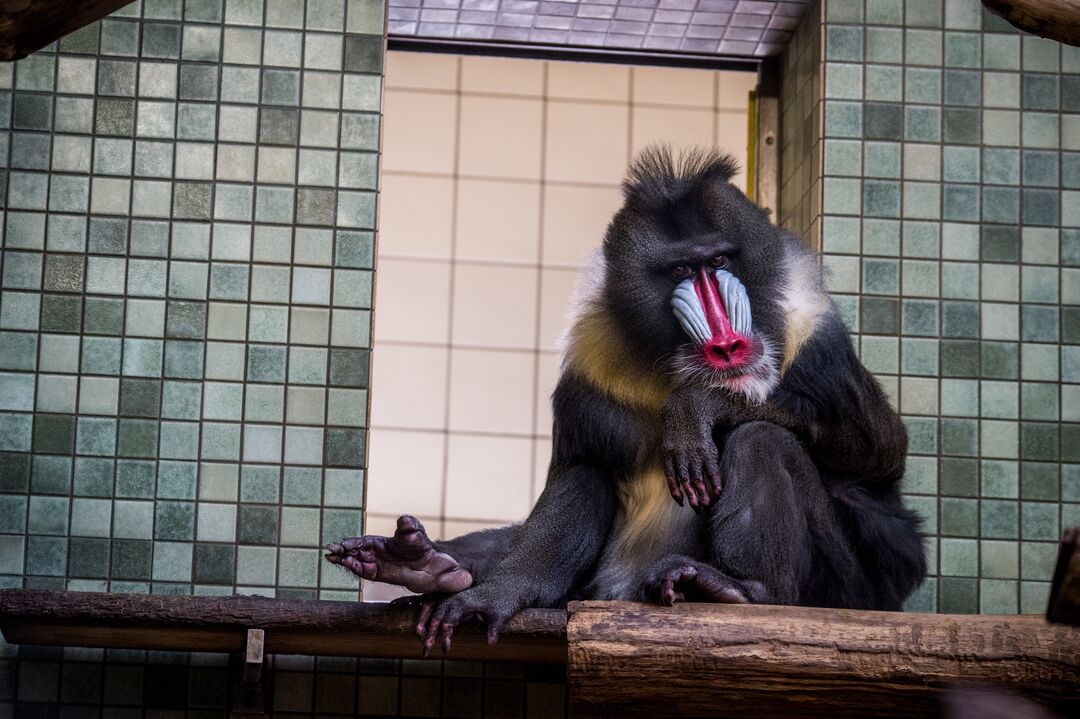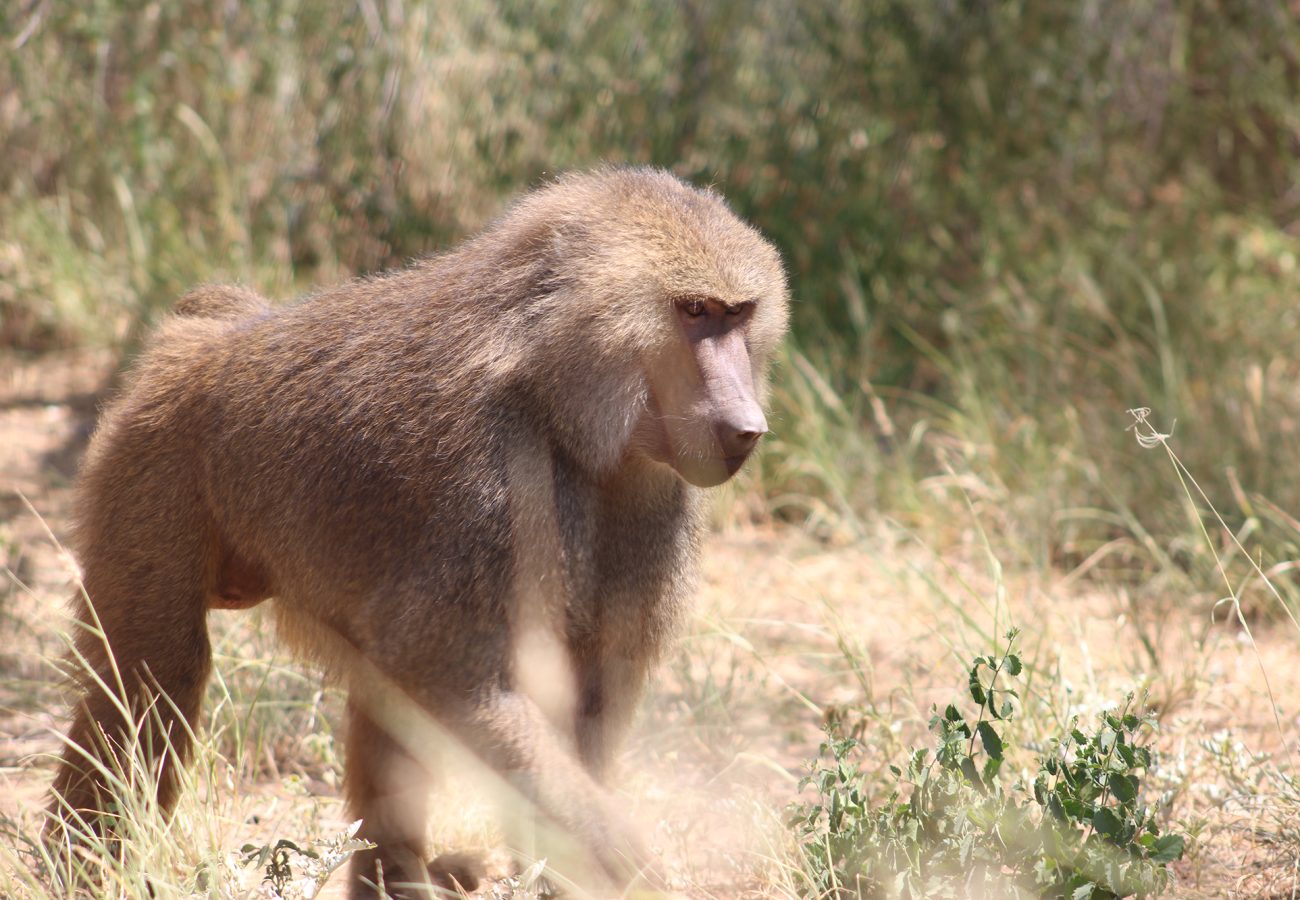How to recognise a baboon
Baboons are one of the largest monkey species in the world. They are also some of the most identifiable given their large stature, big tufts of hair on their faces and their large, often brightly coloured, hairless bottoms. Baboons share around 94% of their genetic make-up with humans.
Where do baboons live?
Baboons live in many different habitats from semi-desert and open savannah to mountains and mangroves. Because of the diverse range of habitats that baboons inhabit, their diet is hugely varied and can include fruits, leaves, flowers, seeds, shoots, buds, tuberous roots, bark, bulbs, twigs, sap, mushrooms, lichens, invertebrates, lizards, birds, reptile and bird eggs and small mammals.
Many baboon populations also live closely alongside humans, leading to crop raiding and foraging in rubbish dumps. Some species are more restricted in their range. For example, the Hamadryas baboon only inhabits areas of flat unforested grassland, hillsides and mountains, bordering the Red Sea.
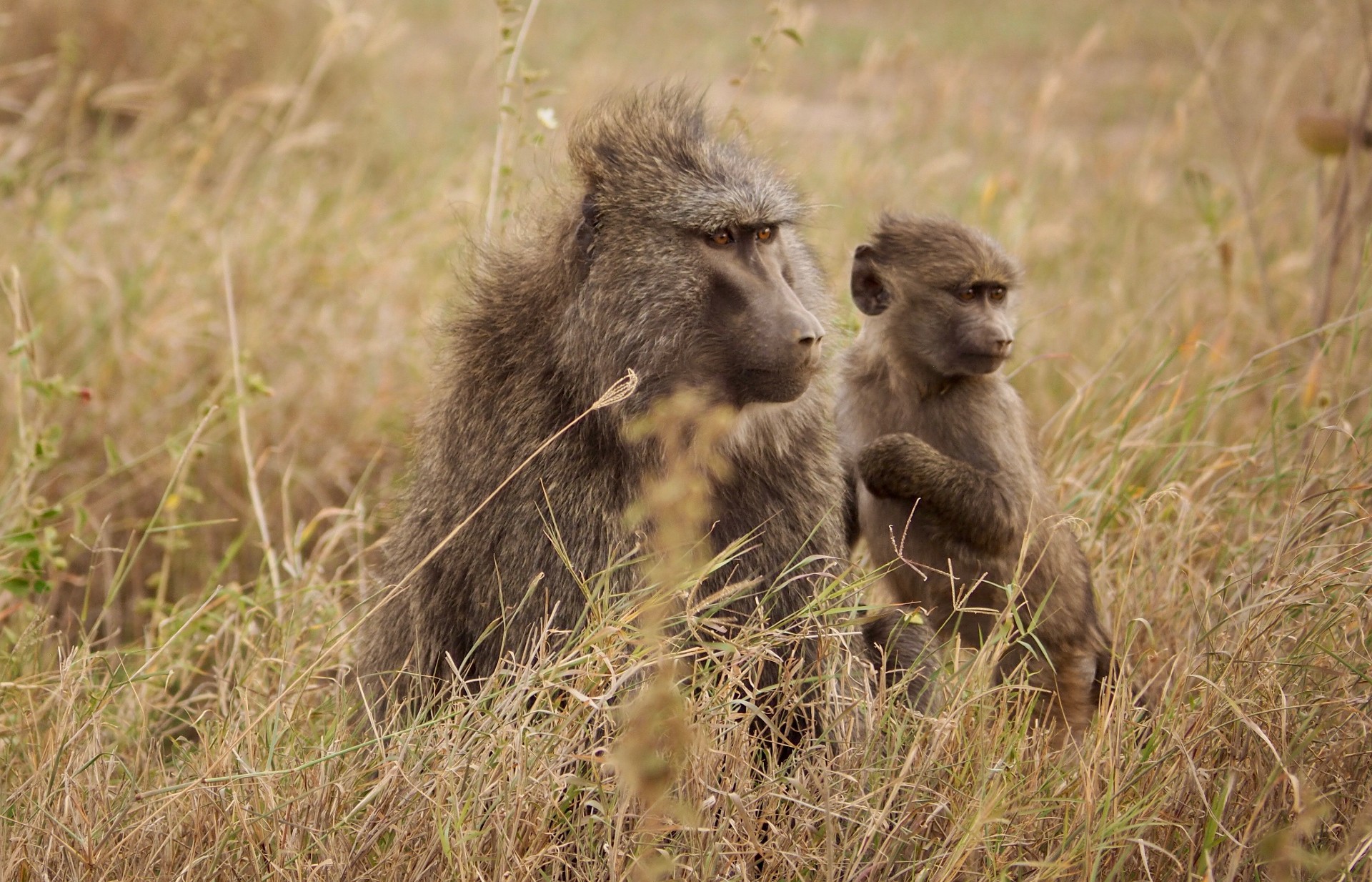
Wild baboons (c) Jorge Tung, Unsplash
Baboon behaviour
Baboons spend most of their time on the ground foraging for food. They are mostly considered to be opportunistic feeders rather than animals who engage in active hunting regularly.
Most wild baboons live in hierarchical ‘troops’ ranging from five to 200 or more animals. These troops are based on a core of females and juveniles, and may include several transient males. Some species live in much smaller troops of one male and just a few females. Male baboons leave their birth group, usually around puberty, whereas females stay in the same group their whole lives. Their lifespan is typically 20-30 years, but they can live up to 40 years.
Baboons have a very complex system of communication which includes vocalisations, body language and facial expressions. They use body language and facial expressions to communicate most of the time. A typical facial expression, for example, is a wide open mouth to show their large canine teeth as a threat against other baboons or animals.
They have many other signals to communicate threat and dominance, including intense staring, flashing of the eyelids, ground slapping, chewing, tooth grinding, yawning, eyebrow raising, ear flattening, and shaking of rocks and branches. Females may use body language, such as presenting her rump to males, to show that she is receptive to mating.
Females typically give birth every other year, usually to a single infant after a six-month gestation. Baboons have been observed to show a lot of affection to their young through gestures and play.
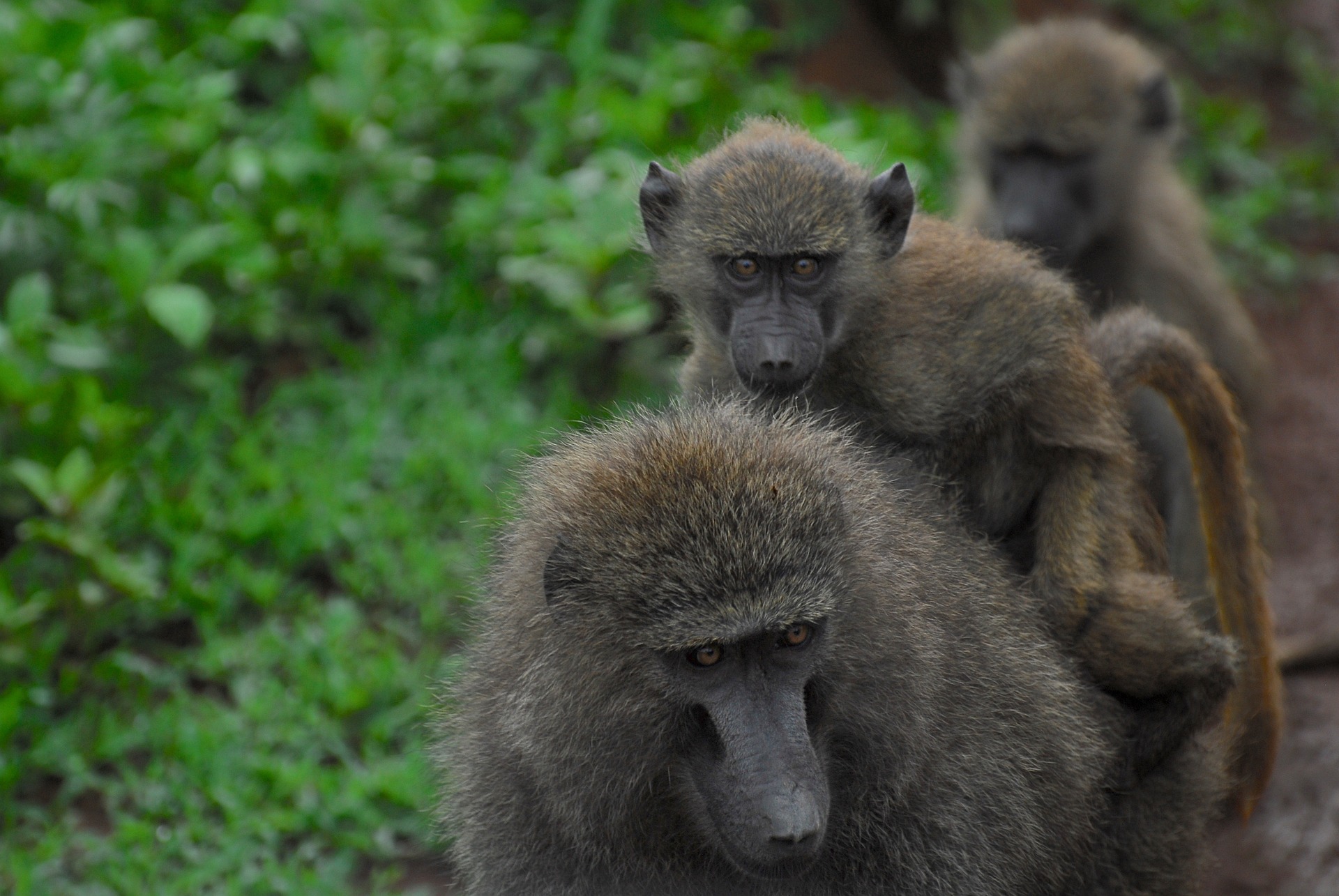
Wild baboons (c) Pixabay


